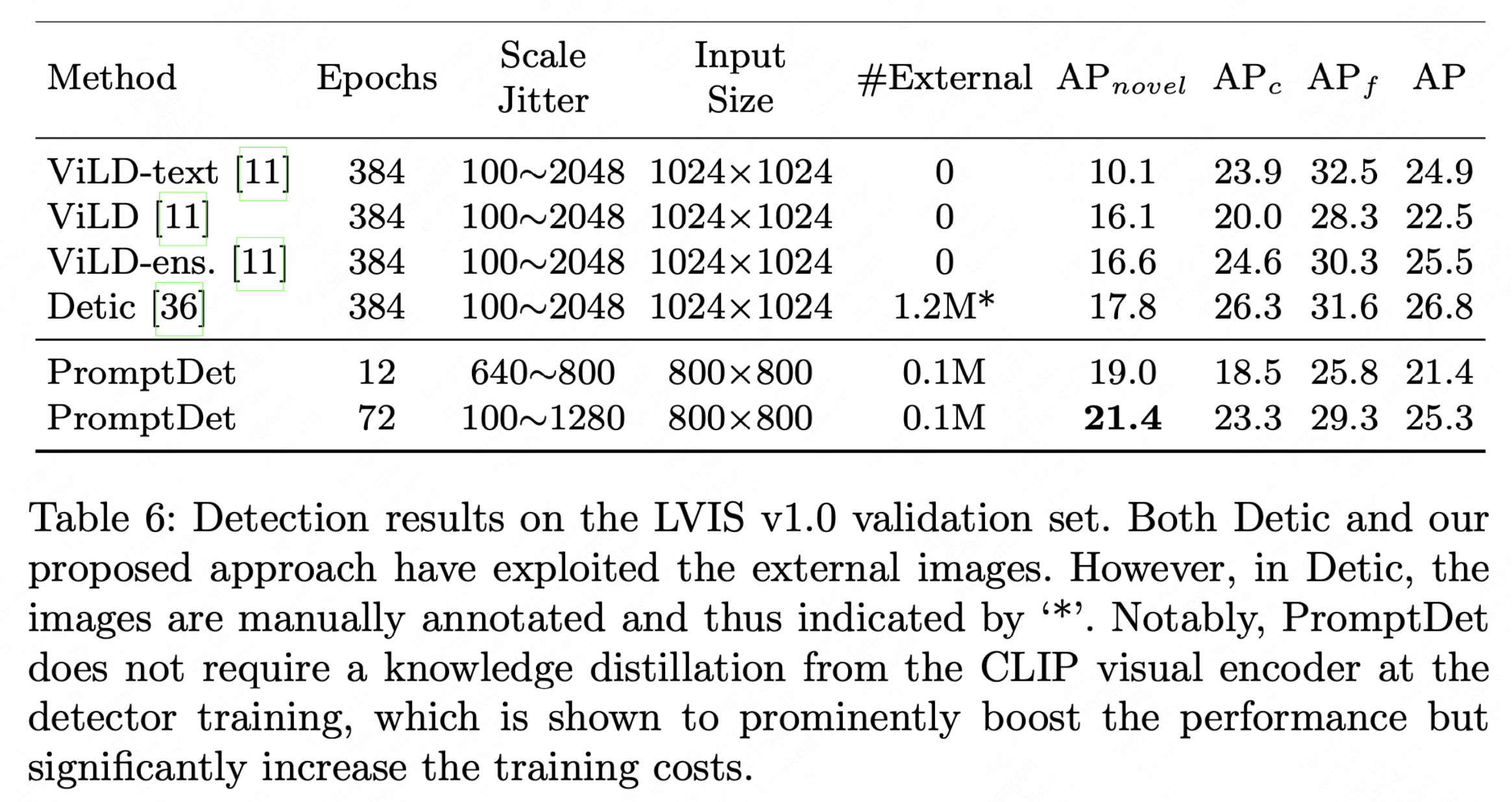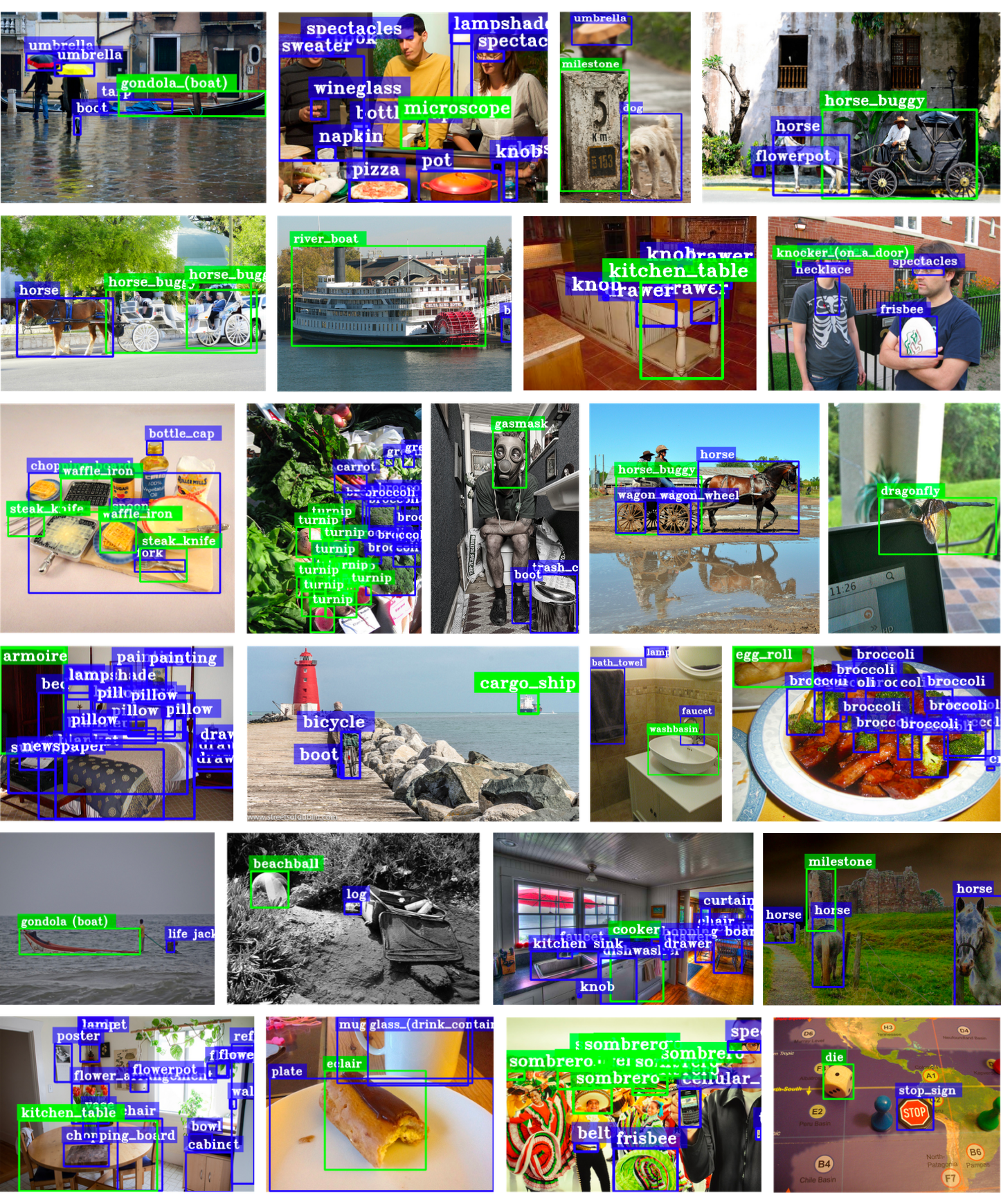|
The goal of this work is to establish a scalable pipeline for expanding an object detector towards novel/unseen categories, using zero manual annotations. To achieve that, we make the following four contributions: (i) in pursuit of generalisation, we propose a two-stage open-vocabulary object detector, where the class-agnostic object proposals are classified with a text encoder from pre-trained visual-language model; (ii) To pair the visual latent space (of RPN box proposals) with that of the pre-trained text encoder, we propose the idea of regional prompt learning to align the textual embedding space with regional visual object features; (iii) To scale up the learning procedure towards detecting a wider spectrum of objects, we exploit the available online resource via a novel self-training framework, which allows to train the proposed detector on a large corpus of noisy uncurated web images. Lastly, (iv) to evaluate our proposed detector, termed as PromptDet, we conduct extensive experiments on the challenging LVIS and MS-COCO dataset. PromptDet shows superior performance over existing approaches with fewer additional training images and zero manual annotations whatsoever.
|







